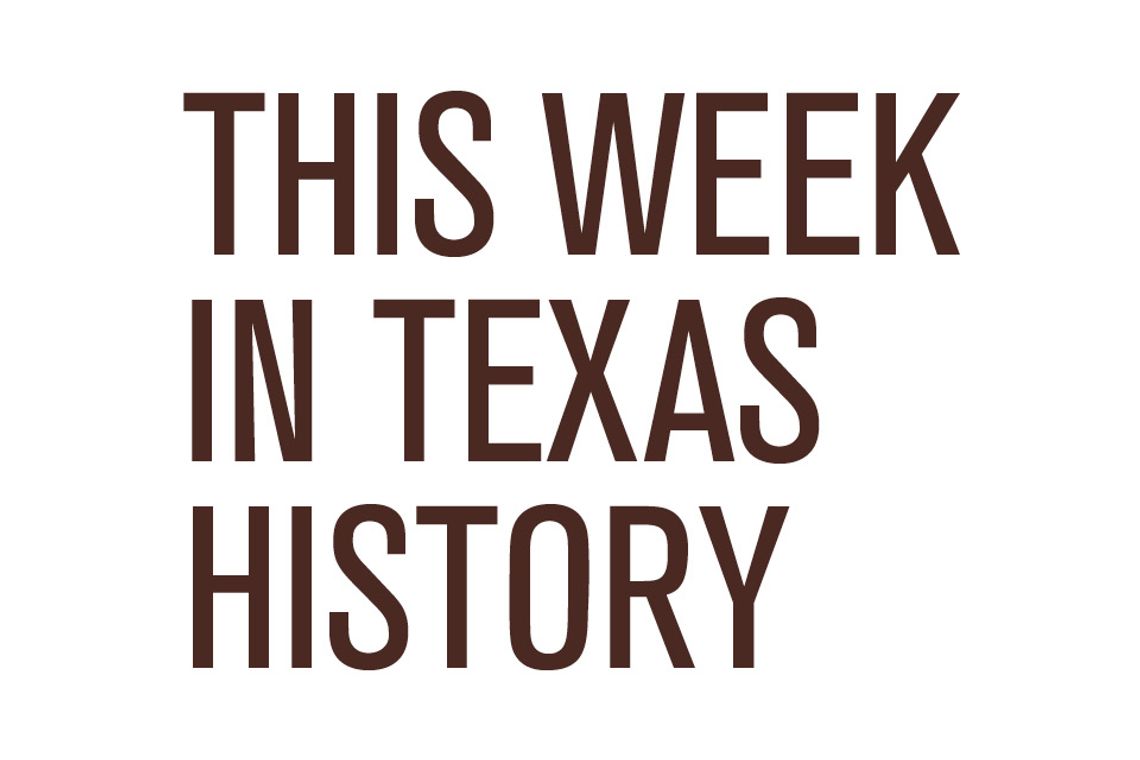Returning home from a trip to Texas’ leading mineral water resort, a Marlin man issued an earnest appeal to his neighbors in a May 26, 1905 letter to the editor of the local newspaper.
“The virtue of the water in Mineral Wells do (sic) not begin to compare with our water,” wrote the concerned citizen. “We have a beautiful and healthy location and nature has blessed us with most favorable surroundings in every way.”
The practice of “taking the waters” dates back to prehistoric days. The Texas
Almanac states, “Indians carved crude bathtubs out of rocks at Boquillas Hot Springs in what is now Big Bend National Park so they could bathe in the hot mineral water.”
The practice of “taking the waters” dates back to prehistoric days. The Texas Almanac states, “Indians carved crude bathtubs out of rocks at Boquillas Hot Springs in what is now Big Bend National Park so they could bathe in the hot mineral water.” More recently none other than Sam Houston sought relief for his aching wounds at Sour Lake in Hardin County and the sulphur springs in Grimes County.
In 1877 James Lynch and his sickly wife Amanda left Denison in search of a better climate. They settled in a cozy valley in Palo Pinto County, where James talked an itinerant driller into a digging a water well for his family.
At first the Lynches and their nine children were reluctant to drink the well water because it tasted even worse than it smelled. Before long, however, their thirst conquered their fear, and everyone held their noses and gulped it down in increasing quantities.
In a month or two, the whole family felt better. Mrs. Lynch experienced the most dramatic improvement in health, as the crippling rheumatism that had hounded her for years seemed to disappear.
Word spread fast of the miraculous “cure,” and strangers started showing up at the Lynch farm to sample the elixir. James Lynch was happy to oblige at the going rate of five cents a quart. Business was so brisk he had to drill two more wells to keep up with the demand.
Lynch’s growing legion of customers had to deal with the same doubts that had dogged his kin. Besides the awful taste and stomach-turning stench of the water, there was the common belief in “miasma” that cited “harmful vapors” as the cause of disease.
Two years after James Lynch’s accidental discovery, 125 wells dotted the landscape and the new town of Mineral Wells was springing to life. Enterprising newcomers cashed in on the boom not only with the sale of bottled water but also by peddling salve, soap and crystals.
Of all the colorful tales that make the early history of Mineral Wells such interesting reading, is how the “Crazy Well” got its name. An old woman in the throes of dementia spent her day sitting next to the well imploring passersby to draw her a pail. Enough of them took pity on the poor thing that her mind eventually cleared, or so the story goes.
That account and innumerable testimonials raise the question of what if any medicinal properties mineral water actually contains. In the case of the so-called “crazy lady,” tests of the Mineral Wells water revealed, among other things, significant amounts of lithium, which today is used in the treatment of bipolar disorder.
But in general the claims of mineral water promoters and health spa proprietors in the late 1800’s and early 1900’s were anecdotal at best and presented without a shred of scientific proof. On the long list of maladies that mineral water could supposedly cure were alcoholism, baldness, cancer, diabetes, gout, malaria, pneumonia, St. Vitus’ dance and venereal diseases to name only a few.
When the mineral water craze crested around the turn of the century, at least 100 locations in the eastern half of the Lone Star State offered baths, water by the glass or bottle and accommodations ranging from plain campgrounds to luxury hotels.
The crown jewel of the Texas resorts was the Baker Hotel that opened in Mineral Wells in 1929 at the end of the boom. With 14 stories and 450 rooms, it was twice the size of the Crazy Hotel, the biggest of the town’s 45 inns, and had everything the well-heeled health seeker could desire: an 18,500 square-foot drinking pavilion, gymnasium, medical clinics, beauty salon, barber shop, bowling alley and rooftop garden and dance floor.
The Baker was the “in place” for the discriminating traveler, who did not necessarily give a hoot about his health. It was where “cattle kings and oil tycoons twirled society gals to the sounds of Lawrence Welk, Paul Whiteman and other big bands.”
But the Depression pulled the plug on the mineral water boom to the detriment of Mineral Wells and the rest of the resorts. The economic belt-tightening radically reduced the disposable income of even affluent Americans while the Food and Drug Administration cracked down on medical quackery and medicine stepped into the modern age with antibiotics. Gas rationing during World War II proved to be the last nail in the coffin.
Mineral Wells and Marlin survived the changing of the guard as did other communities. But some suffered the fate of Wootan Wells, a well-known health resort in Robertson County that regularly played host to Gov. Jim Hogg and his daughters along with 2,000 other summer guests only to end up a ghost town.
“Unforgettable Texans,” Bartee’s fourth and latest book, is still available. Get your copy by mailing a check for $28.80 to “Bartee Haile,” P.O. Box 130011, Spring, TX 77393 or order on-line at barteehaile.com.











